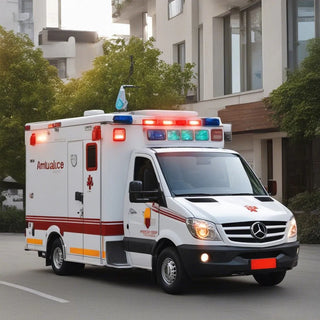Traumatic wounds caused by accidents, falls, collisions, bites, gunshots, stabbings, or other forms of injury often require immediate first aid to control bleeding and prevent further harm. Knowing what to do after a serious laceration, puncture, abrasion, or other traumatic wound can save a life. This guide covers emergency first aid steps for traumatic wounds.
Causes of Traumatic Wounds
Traumatic lacerations, punctures, and other wounds can result from:
- Motor vehicle collisions
- Gunshots or stabbings
- Falls and other impact injuries
- Animal bites
- Sharp objects like glass, metal, tools
- Explosions and debris
Over 30 million people visit US emergency rooms annually due to unintentional injuries according to the CDC. Prompt first aid helps minimize damage and complications.
Assess the Wound and Bleeding
- Apply direct pressure with a clean cloth or bandage to control any active bleeding. Elevate the injured area if possible.
- Note the size, depth, and location of the wound.
- Look for debris or foreign objects lodged in the wound.
- Watch for continued blood flow and soak through the bandage.
Provide Traumatic Wound First Aid
If bleeding is not easily controlled:
- Apply a tourniquet 2-3 inches above a bleeding extremity wound to restrict blood flow.
- Pack wound cavities with gauze or clean cloth. Apply continued pressure.
- Cover with a compression bandage, continuing to apply pressure.
- Raise and immobilize the injured extremity.
- Apply a tight bandage on top of compressed gauze for punctures.
Call 911 or seek emergency care for:
- Uncontrolled bleeding not stopped with direct pressure
- Possible internal bleeding or organ damage
- Large, gaping wounds
- Serious wounds to the head, neck, chest or groin
- Impaled objects still stuck in the wound
Other First Aid Tips
- Have the injured person rest quietly. Keep them warm to prevent shock.
- Do not remove foreign objects or scrub the wound.
- Watch for signs of infection in the following days like fever, redness, swelling, pus.
- Tetanus shots may be required depending on wound type and individual immunization history.
Serious traumatic wounds require medical assessment, treatment, and monitoring even after initial first aid. Seek emergency care promptly for major traumatic injuries to limit damage, pain, and permanent impairment.
Disclaimer: This article provides general wound first aid information and does not substitute for professional medical care. Always consult a doctor for any trauma injuries or health concerns.
References
Bulger, E. M., Snyder, D., Schoelles, K., Gotschall, C., Dawson, D., Lang, E., Sanddal, N.D., Butler, F. K., Fallat, M. E., Taillac, P., White, L., Salomone, J. P., Seifarth, W., Betzner, M. J., Johannigman, J., & McSwain, N. (2014). An evidence-based prehospital guideline for external hemorrhage control: American College of Surgeons Committee on Trauma. Prehospital Emergency Care, 18(2), 163-173.
https://doi.org/10.3109/10903127.2014.896962
Nicks, B. A., Ayello, E. A., Woo, K., Nitzki-George, D., & Sibbald, R. G. (2010). Acute wound management: Revisiting the approach to assessment, irrigation, and closure considerations. International Journal of Emergency Medicine, 3(4), 399–407.
https://doi.org/10.1007/s12245-010-0217-5
Singer, A. J., Dagum, A. B., Valentine, S. M., & Hollander, J. E. (2008). Current management of acute cutaneous wounds. The New England Journal of Medicine, 359(10), 1037–1046.
https://doi.org/10.1056/NEJMra0707253
Stay tuned for more insightful content on the role of nutrition in health and healing from Condition Directed Supplements.
